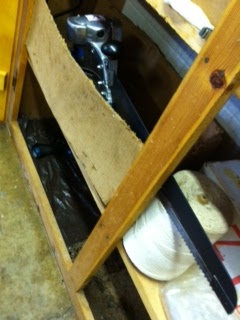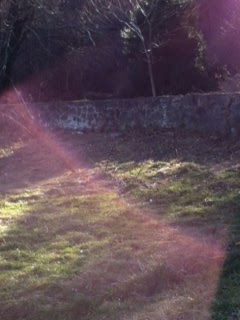After reviewing the 2011 posts, I selected a group that I consider the Top 5 events that I posted about last year. They’re not presented in any sort of ranking – just chronologically. Some were “once in a lifetime” events – and some were part of an ongoing process. All in all though, at the end of the day, they were just part of life’s rich pageant.
January 2011: Trip to Japan. This was a direct result of success at work. During the summer before, I worked with a colleague to identify and pursue a couple of government RFPs that required marketing, financial, and facility analysis to support construction projects, predominantly for recreational facilities on military bases. Although the celebration of that win didn’t last long (I was laid off in August – don’t worry, as you’ll see, I made the best of it), the Japan trip became a once in a lifetime kind of event.
I went to an Army base at Camp Zama, Japan. The travel experience–the long flight there, arrival at and navigating the airport, and the 90-minute bus ride to the base; and the trip back–with a clear day view of Mount Fuji, plenty of time for duty-free shopping at Narita, and comfortable seating to Seattle; these were great. Being on an Army base for the week was vaguely familiar, after all I was stationed for a year at the Presidio of Monterey…the real treat was the touring day I’d managed to build in at the end, and my trip to Kamakura – there I saw temples and shrines, and the giant Daibatsu Buddha.
I missed seeing any of my USC classmates during the trip…maybe next time. I definitely want to go back!
Here’s a link to the Japan posts:
http://hawksbillcabin.blogspot.com/search/label/Japan
January-April 2011: The Alexandria Kitchen Remodel. Since moving here 8 years ago, in 2003, we’ve been talking about a kitchen remodel, updating the place after its last renovation in the 1980’s. Mary did extensive research on materials – cabinets, counter tops, backsplashes, and even wood flooring—and then she organized and designed the new layout. We moved the door from the dining room to the kitchen to improve the flow in there and provide more counter space, made the pantry more useable, and then changed the breakfast nook/sunroom area so that it is a welcoming place to hang out.
The kitchen project proceeded hastily, and it is a real showcase. We’ve been gratified by all the compliments, but even better – it’s been a great change. It went so well, in fact, that we took on a second set of projects upstairs…
We added a classic knee-wall closet up there, cedar-lined. And we updated the upstairs bathroom, including reglazing the tub from its old ‘80’s era mauve to a new glistening white. These are great changes, but I have to admit by the end of all the construction, I was ready for it to be over.
During this time, we adopted Tessie, our 3-year old Border Collie. She's visible in the picture that goes with this post, attending with interest to whatever it is that Mary is doing in the photo there.
Links:
http://hawksbillcabin.blogspot.com/2011/04/kitchen-complete.html ;
http://hawksbillcabin.blogspot.com/2011/05/remodel-that-goes-on-and-on.html
 May 2011, and continuing: The 75 at 75 Project.
May 2011, and continuing: The 75 at 75 Project. Gradually, in early 2011, I became aware that Shenandoah National Park was observing the 75th anniversary of its founding beginning in June. I thought about some appropriate observance of my own for some time and finally came up with a project that entailed hiking 75 miles in the Park during the anniversary year.
The project builds on the success of having hiked the 26 “Best Easy Day Hikes” from the eponymous guidebook and was meant to celebrate the Park that I have really come to know, enjoy and love. I picked a preliminary list of hikes that share a common intermediate difficulty – they each are more than five miles long and include a net elevation change of 500 feet.
When I first made the plan, I had hoped to complete the 75 miles during 2011, but as off today’s post I’ve only completed about 50 miles. I have plans for three hikes to complete the remaining 25 miles, and I hope to finish them by May 2012.
Link to “75 at 75 Project” posts:
http://hawksbillcabin.blogspot.com/search/label/75%20at%2075%20Project
August 2011: The Agribusiness Internship. I mentioned my layoff in the post about the Japan trip above – yesterday I was talking about it to a friend, and I realized I was still pretty angry about the whole thing. After winning those two contracts and leading six projects under them during the early part of the year, and receiving excellent feedback from the client, I was given about a week’s notice that I was to be part of a rather large company-wide downsizing to help make numbers. There was a chance I’d be called back to work, however, and I decided that I would wait for a couple of months before I began a serious job search. (Update: I began my formal job search in October, and had an offer in November. I started my new position in December.)
The layoff allowed some creativity – I’m very fortunate to have befriended so many great people in Page County, and I spoke with David Sours at Public House Produce about joining him for what we called an “internship.” Looking back at it now, I fancy that David really wanted somebody to ride with him over to the Shenandoah Valley Produce Auction in Dayton on Tuesdays, about an hour’s drive, and to enjoy a hot dog and some pie over there while he sold his tomatoes.
On Wednesdays, the work centered on his emerging pasture-raised chicken business, modeled on the Salatin book
Pastured Poultry Profit$. The cycle for this part of the process was the chicken round-up on Tuesday nights (I participated in this a couple of times, but I think David often got help from more efficient chicken wranglers), then meeting at 5am on Wednesdays to drive to the processor in New Market. After the birds were “sent on their way” at the processor, we’d head back to the farm for some quick chores – moving the chicken tractors in the field and feeding the birds. Then at 9am, it was back to New Market to pick up the processed birds, and then to deliver them to a local restaurant in Luray.
After delivering the birds, there were more chores and assignments at the farm. Some of them were quite dirty…dirtier jobs than I’ve ever had. I learned a heck of a lot at the farm this summer from all of this, and only can hope that there is no lasting damage to the enterprise over there at Public House Produce from my efforts…
As I am writing this, I am also remembering now that it was because of the internship that I happened to be out at the Hawksbill Cabin for the big Virginia earthquake. That was quite a thing to experience and reminded me for a moment of some of the tremors I’d experience in Los Angeles. But that’s a topic for some future post.
Now, a side benefit of the internship was having an up-close view of the development of “Page County Grown” – a local effort to brand and promote family farms in Page County. It is a great organization that has already earned its share of success, including a big highlight of the summer, the first farm tour and a celebratory dinner at the Mimslyn. What a treat to watch this develop, and I am hoping that I can find a few effective ways to contribute to its growth and success in the future.
Here’s a link to the internship posts:
http://hawksbillcabin.blogspot.com/search/label/Agribusiness
October 2011: Trip to Las Vegas. As a professional, I learned somewhere along the way that there is a responsibility for sharing what you know with your colleagues. Starting back in 2007, I have had a relationship with some folks who put on a couple of facilities tradeshows every year; the group had invited me to present in Las Vegas at their October event, which was held at the Mirage (I also present at their annual event in Baltimore, held every March).
Participating in the event is very rewarding and I really appreciate having the chance to share my experience with my colleagues in the field – and it’s doubly rewarding when we get the chance to discuss their own work, which we often do during the Q+A after my talks. Often, the next week brings a dozen or more requests for a copy of my slides, which I am happy to send along.
The Vegas conference also gives me a chance to do some sightseeing: certainly there is the Strip, and a chance to take a look at the casinos and those other things that made Vegas what it is. However, Las Vegas is in the middle of a couple of wonderful National Parks – including the Grand Canyon, which I visited in 2009, and Death Valley, which I made into this year’s destination. High Points, if you will, of that trip, included a fascinating desert landscape, and then recording the lowest elevation yet on my Casio Pathfinder altimeter at Badwater Flats. My watch records the elevation as -150 meters; corrected for measurement errors that is 110 meters. The official elevation was 282 feet below sea level, so my watch ended up being within 10 percent – I thought that was pretty good.
So those are my Top 5 for 2011 – some of them have lingering effects and impacts heading into 2012, and there’ll be future posts that reference these events. Certainly, I’ve got some rich storytelling material out of these experiences. All of which leads me to look forward to keeping up the Hawksbill Cabin blog for 2012.














































